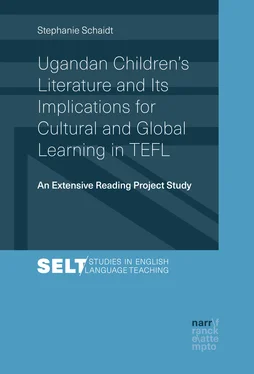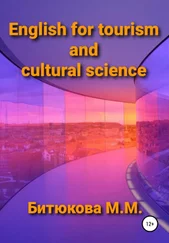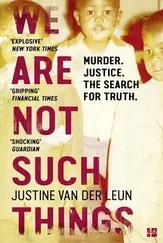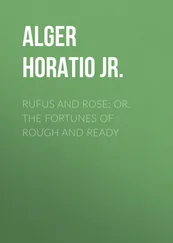If these texts (as we presume) are performed for a child audience, why are they often dominated by adult themes, and why do they employ layered language that only adults can decipher? Do adults use children’s songs as an arena for playing out their own agendas?
Other scholars, however, believe that children’s literature can also be postcolonial. For Bradford (2007, p. 7) the relationship between children and adults cannot be compared with that of Orientals and Orientalists: “children are always seen as occupying a state or stage that will lead to adulthood, whereas Orientals never transmute into Orientalists and are thus always and inescapably inferior”. She criticises that Nodelman does not take into consideration the question of ‘race’ which is actually essential for postcolonial theory. McGillis (1997, p. 8), who also points to the contradiction of postcolonialism and children, sees the possibility of children’s literature being postcolonial as children’s books “represent a challenge to the traditions of mainstream culture”. Introducing students at universities to children’s literature and making use of this literature in the foreign language classroom, may be evaluated as a postcolonial act itself since it contributes to the process of reconceiving the canon. In Khorana’s (2007, p. 17) view, postcolonial literature “speaks in multiple voices; it gives agency to and embraces all hitherto marginalized segments of the population—children, women, untouchables, and ethnic and racial minorities”. Taking these reflections into account, literature which gives children in Uganda, who were formerly often silenced, a voice and does not patronise them but provides them with the possibility to choose, to make decisions and to think critically, can be referred to as postcolonial.
Many Ugandan writers after independence gave their attention to the Ugandan child. They wrote down oral tales and explored current topics that were of interest to the children in the country. Children in Uganda are the main characters in the narratives and the stories focus on young people’s issues. The literature does not only portray the children as victims of circumstances but also as powerful actors who make meaningful contributions to their society. Some of the topics Ugandan children’s literature deals with and selected titles that were chosen for the inclusion in the extensive reading project are presented in the next chapter.
4.4 Selected Genres, Topics and Titles
Ugandan children’s literature can be differentiated into oral and written forms. Moreover, there is literature in different languages in Uganda; the majority of children’s literature is, however, written in English.1
In the present study, I focus on written fiction in English for young people which comprises different genres. The biggest part of it is taken up by folktales and narratives in a realistic mode,2 thus in the form of prose. There are few dramas and poems written for children in Uganda. The folktales contain many ‘fantastic’ and also ‘realistic’ elements and, therefore, share common elements with magic realism.3 The narratives in a realistic mode are set in postcolonial Uganda and deal with different topics such as growing up, school, HIV/AIDS, the girl child and child soldiers. In the present chapter, different genres, topics and titles are discussed. For a further analysis and integration in my study the following 18 texts were selected:
Folktales:
How Goats Lost Their Beautiful Tails (Rwakasisi, 2004)
The Baby in the Forest (Barungi, 2009)
The Adventurous Sisters (Okurut, 1999)
The Precious Calabash (Anywar, 2003)
The Jewels of Amuria (Ranzo, 2013)
A Testing of Strength (Bukenya, 1990)
Fiction in a Realistic Mode
Cherished Dreams (Adyeeri, 1994)
“First Kiss” (Baingana, 2005a)
“The Hair Cut” (Lamwaka, 2010b)
Our Cousins from Abroad (Barungi, 2003)
Voice of a Dream (Namukasa, 2006)
Moses (Kimenye, 1968a)
Moses in Trouble (Kimenye, 1968b)
I Will Miss Mr Kizito (Sempebwa, 2005)
The Unfulfilled Dream (Ocwinyo, 2003)
“JJ” (Segawa, 2010)
I Will Not Fail (Kisubi, 2008)
Children of the Red Fields (Arac de Nyeko, 2005a)
In the precolonial era, literature in Uganda was oral and folktales made up an important part of oral literature (Otiso, 2006, p. 35). In times when formal schools did not exist, stories were told to educate children. Hence, orature is often described as a complete educational system which “helps one to develop as an individual and to become a positive member of society” (Bukenya, Wa-Gachanja, & Nandwa, 1995, p. 16). A large amount of postcolonial Ugandan children’s fiction revives the precolonial period and retells folktales for children. Since the tradition of narrating oral tales is in the process of declining, writers regard it as their responsibility to save these oral stories from extinction. Local Ugandan publishers such as Fountain Publishers and UCWIA, as well as African and Western publishing houses (e.g. East African Educational Publishers and Oxford University Press) “have worked to publish some folktales and use them as instructional materials in primary schools” (Mushengyezi, 2013, p. xvi). Fountain Publishers, for example, has three different series in which folktales from all over Uganda are published: Our Heritage Series, Once upon a Time Series and Tales from the Past Series.
Folktales in Uganda are written and read for various purposes. Through their often humorous nature, they entertain the young readers. But the folktales are also educative; different aspects of social life can be learnt by the children through the tales. The young readers are asked to work hard, to respect elders and girls are warned against advances of older men. Therefore, folktales are also didactic in nature. According to Bukenya and Wa-Gachanja (1995, p. 78), the moral of a folktale is, however, usually conveyed in an indirect, subtle way. It “only invites one towards the right path, but it does not compel or force one to follow that right path. It gives one the freedom to choose between right and wrong”. Furthermore, folktales are valued for sharing with children traditions and customs of different regions in Uganda. In the editor’s note on the back of the books of the Fountain Our Heritage Series , it is stated that they
are also intended to educate children about Uganda’s rich cultural heritage. […] The stories come from different parts of the country so that they can widen the children’s knowledge of both the societies and the cultural values of the different peoples of Uganda. (Anywar, 2003)
Folktales are universal and so are their major themes. They tell of magic, monsters and talking animals, and deal with values which are appreciated all around the world: honesty, friendship, hard work, cleverness, modesty, etc. Their universal nature is also highlighted by the fact that Ugandan and German folktales resemble one another in many aspects. The content and plot of the folktale How Goats Lost Their Beatiful Tails , for example, may be compared with that of Der Wolf und die sieben Geißlein [ The Wolf and the Seven Young Kids ] and The Adventurous Sisters has much in common with the German folktale Frau Holle [ Mother Holle ]. However, since they are the stories of the people, passed on from generation to generation, folktales also give an insight into cultural particularities and different ways of living. According to Fayose (1995, pp. 26–27), “they uphold the ethics of the society from which they originate”.
Читать дальше












